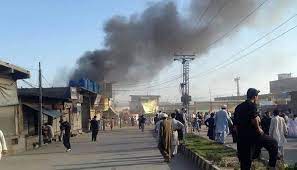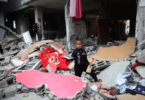The bloody tribal dispute in the newly merged district of Kurram has witnessed a fierce fight between contesting tribes and the death toll reached 11 with two more deaths on Tuesday. According to the reports, clashes continued in Pewar, Gido, Balishkhel, Khar Killay, Sadda, Para Chamkani, Muqbal, and Kunj Alizai areas of Kurram districts while the public was facing serious issues due to movement restrictions and non-availability-of-essential-commodities-because-of-continuous exchange of fire between the parties and road blockades. Meanwhile, the Khyber Pakhtunkhwa government requested the federal authorities to deploy additional military and paramilitary troops under Article 245 to put an end to the conflict. The law and order situation is seriously marred and no permanent ceasefire deal has been facilitated by the local authorities and tribal jirga so far.
Historically, tribal clashes and land disputes are common in Erstwhile FATA because of revenue department flaws and corruption and no accurate marking on the ground, while mountainous and difficult terrains further made this job more complicated/disputed. Therefore, decadeslong controversies often lead to armed tussles between different communities residing in most parts of the newly merged Districts. According to the local Revenue department, currently, there are eight different land disputes going on in the central, lower, and upper areas of Kurram district, most of which existed long before the creation of Pakistan. Recently, the residents of the Dandar Sehra and Boshehra areas took up weapons over a fresh construction on a disputed piece of land on July 7, which shaped into a wide conflict and resulted in multiple deaths and dozens of injuries from both sides. The reports suggest that the KP Home and Tribal Affairs Department with the help of a 30-member elders jirga has been engaged in settling down the disputes and ensuring peace in the area but failed so far.
The newly merged Kurram district formerly known as Kurram Agency is a very sensitive and strategically important district of the former (Federally Administrated Tribal Area) FATA region. Kurram District lies in Central FATA on the border with Afghanistan and has adjoining boundaries with North Waziristan and Khyber Districts, which also share a border with Afghanistan and have served as terrorist sanctuaries during the pre-Zarb-e-Azb era. The Kurram District has a long history of sectarian violence and Shia-Sunni rivalries over the past several decades, while those sectarian groups have close links with national and transnational terrorist outfits and often create serious legal and security issues for the government and Law Enforcement Agencies in the country. Currently, miscreants from banned outfits and foreign Intelligence Agencies are propagating false news on social media and trying hard to label the current land dispute as a sectarian clash to ignite wider sectarian violence in the Kurram district and adjoining regions.
The newly merged Tribal Districts have attracted tremendous importance in the current geostrategic environment amid heightened global rivalry between the major powers. A previously ungoverned region with a long terrorism history, the global powers see FATA as the next arena to engage Pakistan, Afghanistan, and China simultaneously against each other through their proxies including the East Turkistan Islamic Movement (ETIM), the TTP, and certain factions in Pakistan’s Erstwhile FATA having deep nexus with the former high-ups of Afghanistan National Directorate of Security (NDS). For this purpose, the giant of terrorism had been reinvented in newly merged districts, and sectarian violence is being ignited in Kurram, Khyber, and Orkzai Districts to create a high-level anarchy in the entire border region. Although, the provincial government has deployed paramilitary troops and is strictly monitoring the current situation to defuse the conflict, however, those efforts are not sufficient to deal with the enormous challenge. Meanwhile, the local political leadership and notables had requested the Prime Minister and central government to intervene and get control over the situation before it gets too late and the current hostility changed into a wider ethnic and sectarian violence. There are also calls for the deployment of the regular Army to maintain the law and order situation in the violence-ridden area. Moreover, the Prime Minister should convene a high-power committee comprising political leaders, Ulema, and local elders to defuse tension and resolve the land disputes on a merit and permanent basis so this decades-long tussle comes to an end and no foreign conspiracy ever succeeds in the area.







